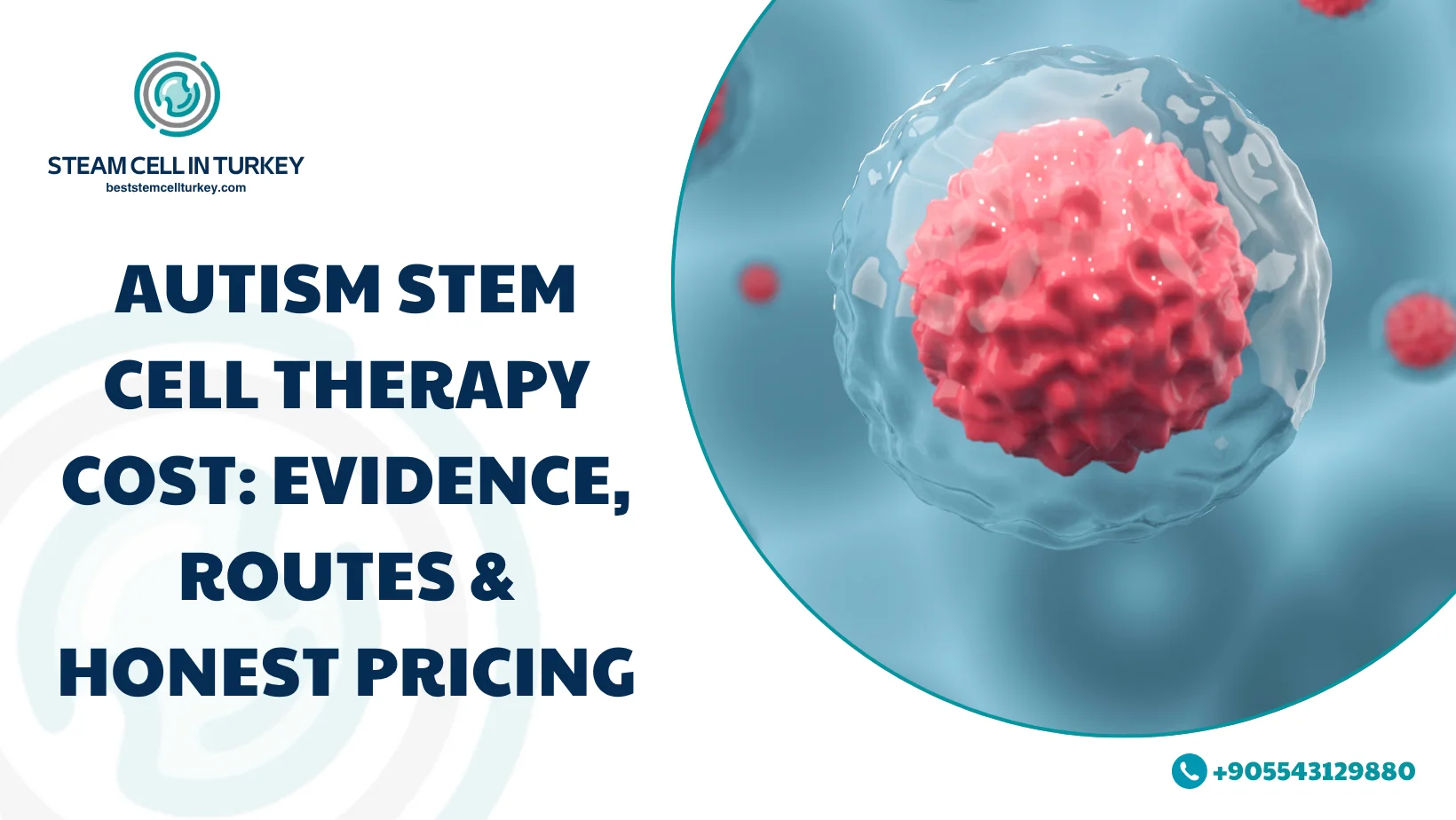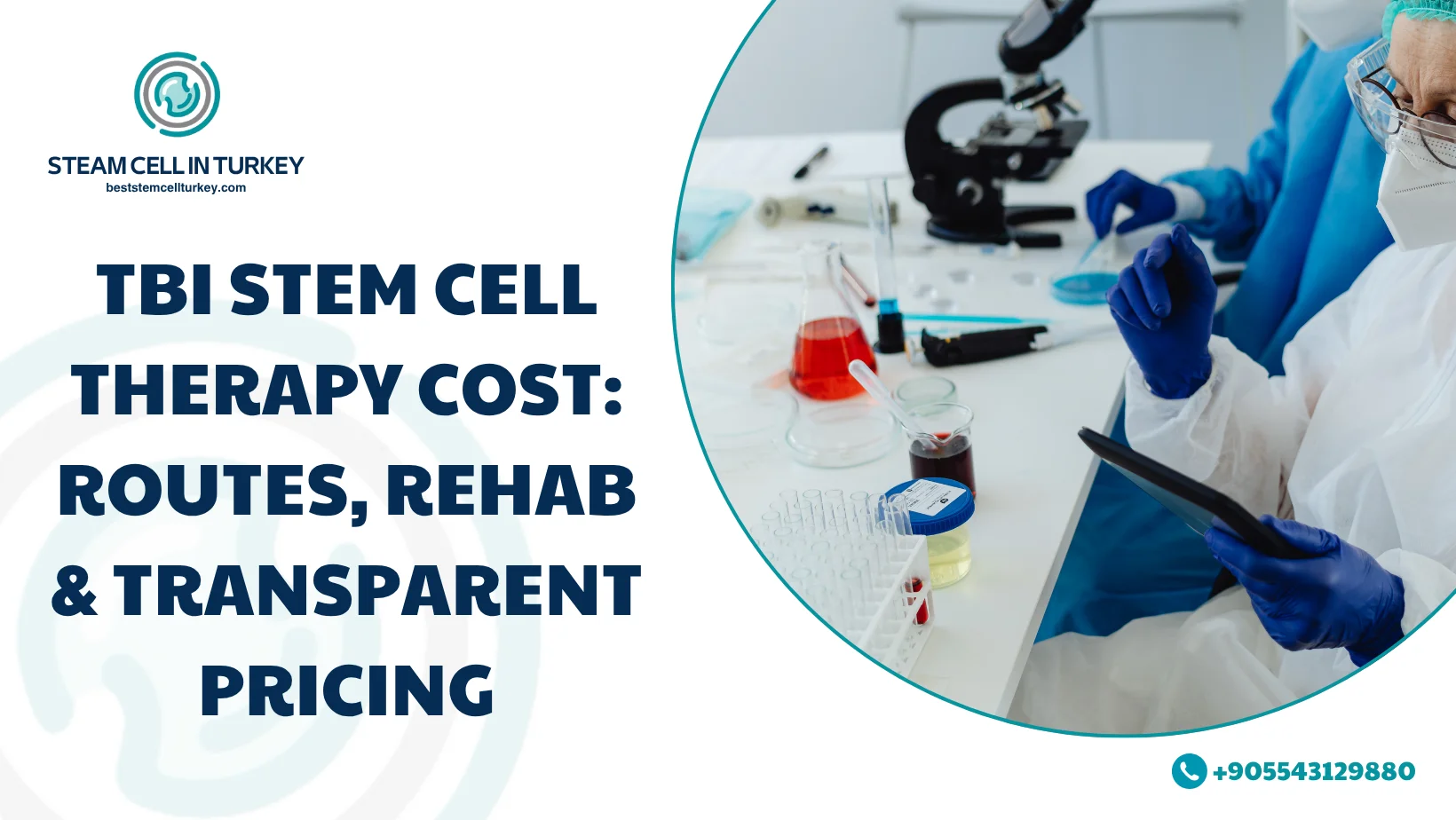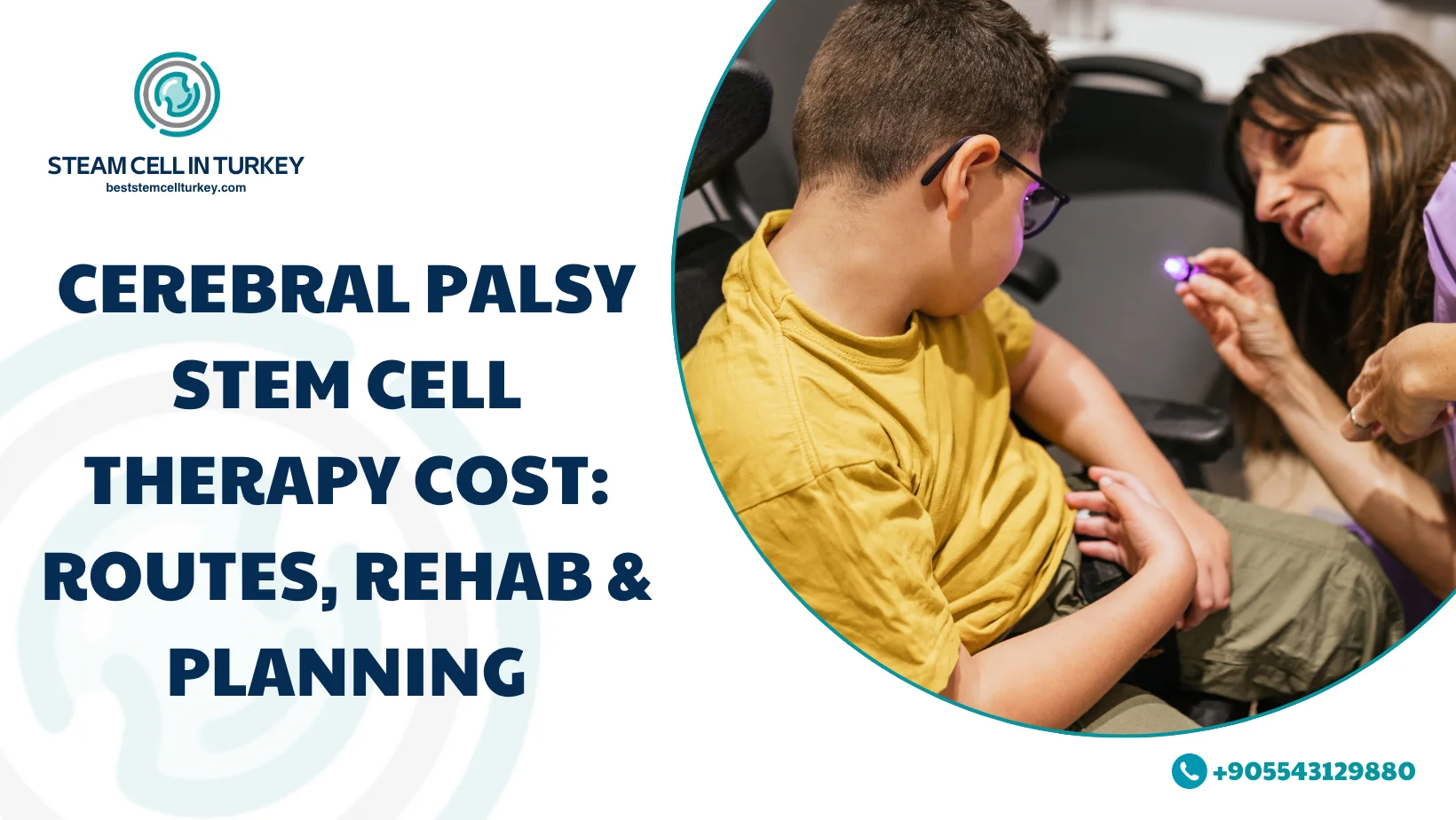Pricing Autism Stem Cell Therapy Cost starts with clarity on what you’re actually buying: the therapy type, delivery route, manufacturing quality (GMP + batch COA), and the intensity of behavioral/rehab support wrapped around the visit. This guide helps you compare quotes line-by-line, align expectations with science and regulation, and plan travel/financing without surprises.
The Real Factors Behind Pricing

1) Clinic MSC programs (investigational)
Mesenchymal stromal cell (MSC) approaches are explored for paracrine/immunomodulatory support—not for “curing” autism. Evidence is mixed: several meta-analyses and reviews report signals on caregiver-reported scales, while higher-rigor trials have failed to show a significant overall benefit on core outcomes. Translation: communications must be cautious, with robust, ISSCR-aligned consent.
2) Academic or clinical-trial settings
Hospital-based protocols (e.g., intrathecal bone-marrow mononuclear cells combined with structured education/therapy) may run under ethics approvals with stricter monitoring. Access is limited; outcomes vary; and newer trials emphasize the need for larger, blinded RCTs.
Key nuance: A high-quality randomized, placebo-controlled Phase II trial of cord blood infusion in children with ASD found no overall improvement in core socialization/communication at 6 months vs placebo—an anchor result that should temper marketing claims.
Line-by-line cost drivers
1) Workup & candidacy
-
Developmental/behavioral assessment; comorbidities; infectious screens; imaging when indicated.
-
Crucially, confirm that standard ASD supports—ABA, speech-language therapy (SLT), occupational therapy (OT)—continue regardless of any biologic add-on. Evidence-based supports are the backbone of progress.
2) Cell product quality (non-negotiable)
-
Demand a current GMP certificate (scope + valid dates) and a batch Certificate of Analysis (COA) listing identity markers, viability, sterility/endotoxin, mycoplasma, and cell count per vial—plus storage/handling SOPs and chain-of-custody. These are table stakes for any ATMP-class product.
3) Delivery route (changes facility time & price)
-
IV (intravenous): session-based pricing; lowest facility overhead.
-
IT (intrathecal, lumbar puncture): day-procedure logistics; adds anesthesia/monitoring fees and specialized staff. Programs must justify route choice in writing; IT is seen in some neuro studies but carries higher procedural intensity.
4) Dose & sessions
-
Quotes should show dose per session and total cumulative dose (commonly in million cells), spacing (e.g., every 4–6 weeks), and any maintenance plan. Without dose math, “per session” prices are meaningless.
5) Behavioral rehab blocks (true value adders)
-
Ask for integrated ABA/SLT/OT intensives timed around visits, with concrete goals (communication, adaptive skills, self-help routines). These hours materially affect outcomes—itemize them.
6) Follow-ups
-
Pre-defined milestones (e.g., communication/socialization metrics, caregiver-reported scales), adverse-event checks, and telehealth cadence—spelled out in writing.
7) Travel & support
-
For medical travelers: transfers, hotel near the clinic, interpreters, caregiver logistics, and accessibility transport—listed as separate line items for clarity.
How to compare quotes fairly
Ask every provider for a written proposal that includes:
A) Includes/Excludes table
-
Workup (developmental/behavioral, labs, imaging), procedure(s), route (IV/IT), anesthesia/sedation, supplies, behavioral therapy blocks (ABA/SLT/OT), and follow-ups.
B) GMP & COA packet (non-negotiable)
-
Current GMP certificate + batch COA (identity, viability, sterility/endotoxin, mycoplasma, cell count), storage/handling SOPs, chain-of-custody. If they can’t show this before you pay, that’s disqualifying. (ATMP rules are your quality benchmark.)
C) Regulatory posture & consent
-
Explicit approval status, realistic endpoints, risks/alternatives (ABA/SLT/OT, caregiver programs), and no guarantees—aligned with FDA cautions and ISSCR guidance.
D) Pricing math you can verify
-
Cost per million cells (when relevant), number of sessions, anesthesia/monitoring fees for IT, imaging/guidance (if any), behavioral-therapy hours, and bundle savings (rehab + travel).
E) Adverse-event reporting
-
Written process and timelines (e.g., FDA MedWatch in the U.S.), plus the clinic’s internal reporting/escalation pathway.
Red flags: guarantees; vague “per-session” numbers without dose/route; missing GMP/COA; pressure to pay before documentation; exosomes pitched as “approved” (they’re not in the U.S.).
Sample package layouts
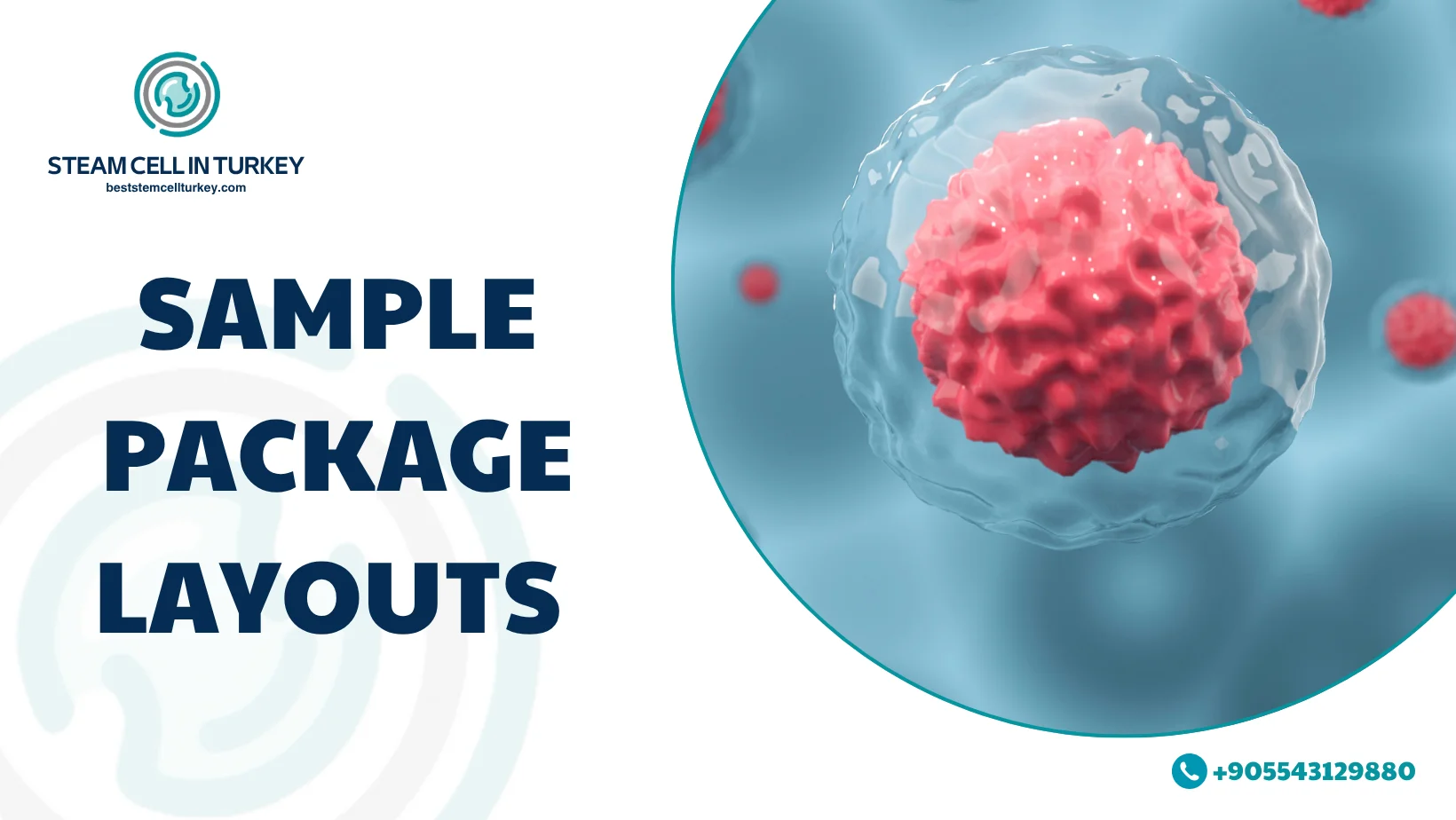
A) IV MSC + Integrated Therapy (Investigational)
-
Sessions: 3× IV infusions, 4–6 weeks apart (dose listed per visit & total).
-
Therapy: ABA/SLT/OT intensives (e.g., 15–20 hrs/week during treatment blocks).
-
Follow-ups: standardized scales at baseline, mid-course, and 8–12 weeks post.
B) IT BMMNC + Education Bundle (Investigational)
-
Procedure: IT (lumbar puncture) with anesthesia plan, monitoring, and post-LP protocol.
-
Therapy: education/parent coaching synchronized with visits.
-
Documentation: GMP certificate + batch COA delivered before scheduling; AE reporting card issued at discharge.
Route comparison (how method changes cost & logistics)
-
IV: lowest facility cost; nurse-led infusion suites; easier for staged dosing.
-
IT (intrathecal): adds anesthesia/monitoring and peri-procedural observation (higher cost). Programs must justify why IT (mechanistic rationale, evidence citations, risk controls) and document the post-LP plan.
There’s no single “best” route; your plan should explain why this route for these goals, list route-specific risks, and show how success will be measured objectively.
Rehab & caregiver planning (turn visits into real progress)
-
Behavioral therapy integration: schedule ABA/SLT/OT intensives around procedure timing; set quantified goals (e.g., PECS requests/day, spontaneous initiations, adaptive daily-living skills).
-
Caregiver training: visual schedules, reinforcement strategies, meltdown safety planning, school/IEP integration, plus interpreter support if traveling.
-
Checkpoints: standardized scales, video-based progress checks, and telehealth to adjust routines; document a Plan B if progress stalls.
Why families choose Best Stem Cell Turkey
Choose documentation over hype. Pair verifiable GMP/COA with the right route, an integrated behavioral-therapy bundle, and clear follow-ups—then lock your travel window and payment plan to start sooner and safer with Best Stem Cell Turkey.
-
Best price at the highest quality: globally competitive quotes with GMP-grade safeguards and a batch COA you can read before travel.
-
Route clarity: explicit IV/IT plan, with anesthesia/monitoring line-itemed and justified.
-
Therapy-first approach: ABA/SLT/OT blocks integrated into your quote—not bolted on later.
-
Frictionless logistics: time-zone-smart scheduling, secure uploads, concierge travel, and 0%/low-APR paths (subject to eligibility).
→ Book a Free Consultation · See Financing · Compare Packages
FAQs about Autism Stem Cell Therapy Cost
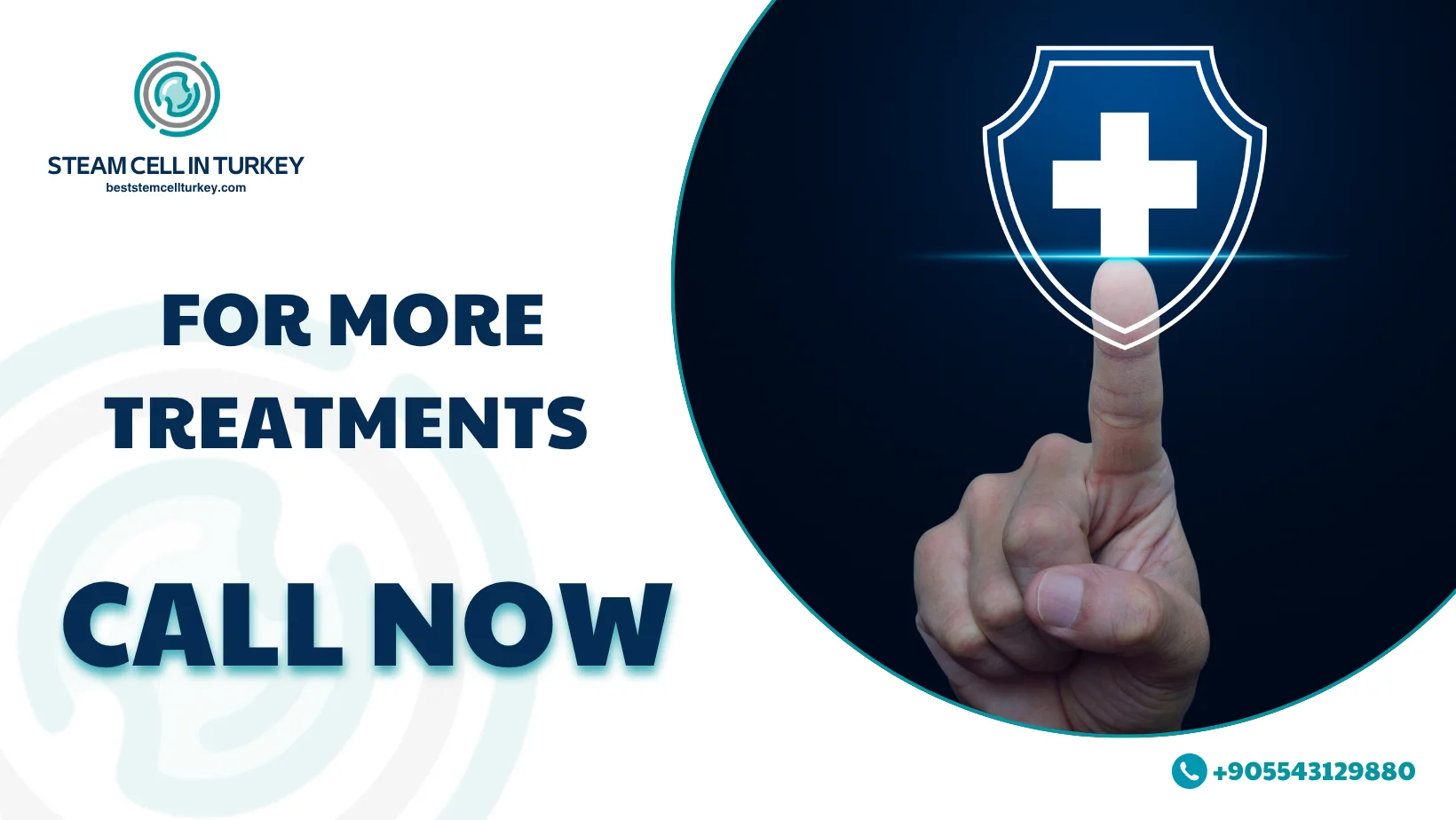
1) Why do ASD stem cell quotes vary so much?
Because costs reflect route (IV vs IT), dose/sessions, facility/anesthesia needs, and whether providers supply a real GMP + batch COA and therapy blocks. Use an Includes/Excludes table and cost per million cells to compare fairly.
2) Is stem cell therapy for autism proven?
No. A randomized, placebo-controlled cord-blood trial found no overall benefit on core social outcomes vs placebo. Newer controlled/open-label studies report signals but need larger, blinded RCTs. Ethical communication avoids guarantees.
3) Which route is better—IV or intrathecal?
It depends on protocol goals and risk tolerance. IT adds anesthesia/monitoring costs and should be justified with mechanism and safety controls; IV is logistically simpler. Your plan must document the rationale and monitoring.
4) What paperwork should I demand before paying?
A current GMP certificate (scope/dates) and batch COA (identity, viability, sterility/endotoxin, mycoplasma, cell count), storage/handling, chain-of-custody—plus clear consent and AE reporting steps (e.g., MedWatch in the U.S.).
5) Can I finance or bundle travel and therapy?
Yes—use Financing for structured payments and Packages for transfers, hotel, interpreter, and ABA/SLT/OT scheduling.
Medical Sources
-
FDA — Important Patient & Consumer Information; Consumer Alert on unapproved regenerative products (risks, reporting). U.S. Food and Drug Administration
-
EMA — Advanced Therapy Medicinal Products (ATMP) overview (cell therapies = medicines with strict quality rules). (EMA)
-
ISSCR — Guidelines for Stem Cell Research & Clinical Translation (2021) (official page + PDF). isscr.org+1
-
Randomized evidence — Dawson et al., 2020 Phase II RCT, cord blood in ASD: no overall improvement vs placebo. PubMed
-
Systematic reviews/meta-analyses — 2021–2023 syntheses on cell-based therapies in ASD: mixed signals; low-certainty; call for larger RCTs. PubMed+2europepmc.org+2
-
Recent controlled/open-label signals — Intrathecal BMMNC + education (phase II, open-label randomized): improved selected functional scales vs education alone (investigational; not blinded). BioMed Central
Ready to plan with confidence?
→ Book a Free Consultation
→ Explore Financing Options
→ contact with us via what’s up

